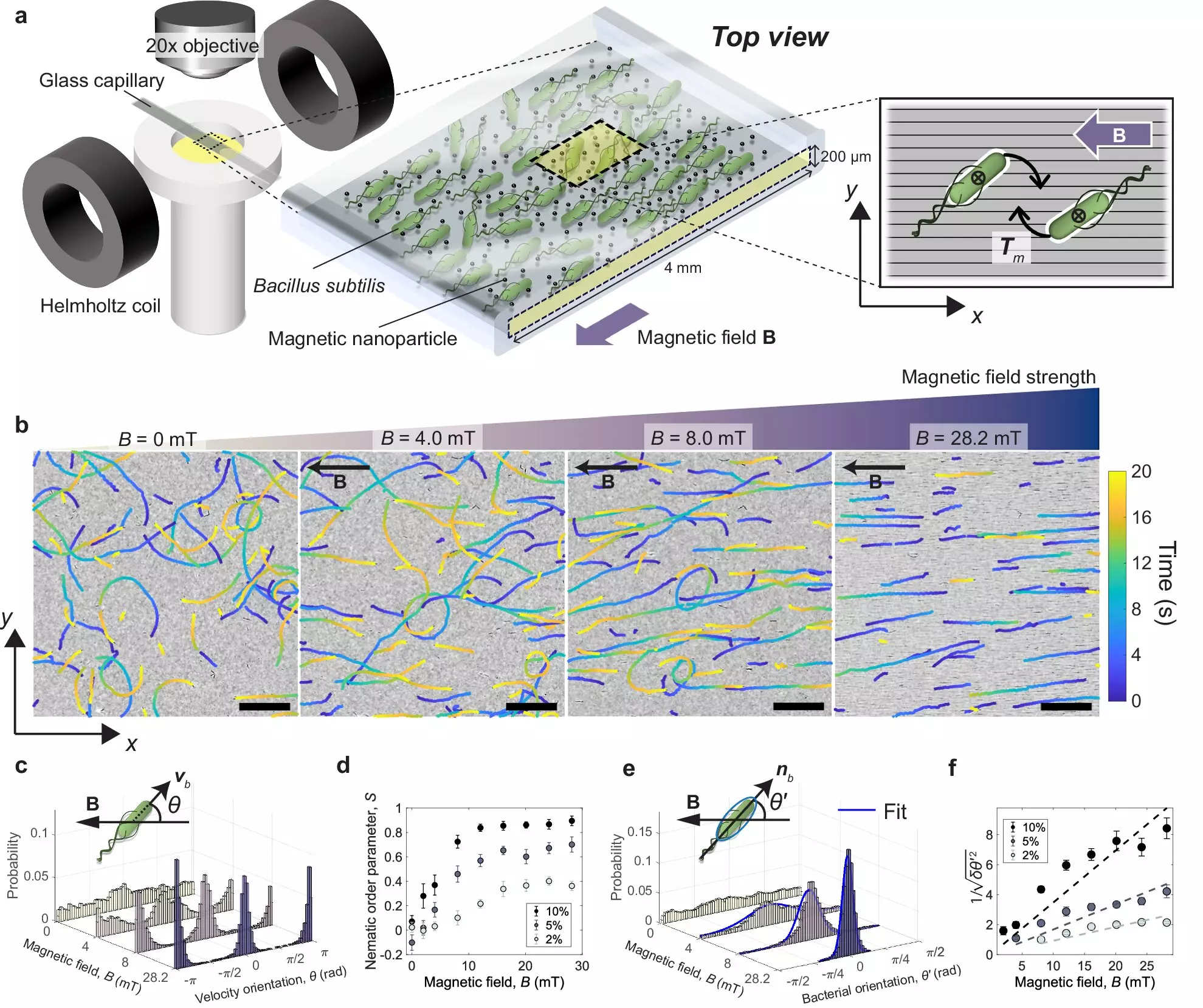The recent research conducted at Finland’s Aalto University has revealed an innovative way to manipulate bacteria through magnets. While the primary focus may seem to be on aligning bacteria in a specific manner, the implications of this study reach far beyond just organizing microorganisms. By utilizing magnetic fields to control bacterial movement, researchers have opened up possibilities for exploration in various fields of study, including complex materials, phase transitions, and condensed matter physics.
Unlike magnetotactic bacteria that possess magnetic properties, the Bacillus subtilis bacteria used in this study are non-magnetic. The alignment process involves mixing these bacteria with magnetic nanoparticles in a fluid medium. When a magnetic field is applied, the bacteria, being non-magnetic voids in the fluid, are compelled to align with the field due to the minimal energy configuration. This alignment is crucial as any deviation from this arrangement requires more energy, resulting in the bacteria forming regular rows due to the torque induced by the magnetic field.
Controlling the Alignment with Magnetic Fields
The degree of alignment of bacteria is directly proportional to the strength of the magnetic field. At lower field strengths or when the magnets are turned off, the bacteria display random movement in the fluid. However, increasing the magnetic field strength progressively aligns the bacteria, eventually leading to near-perfect rows. The population density of bacteria also plays a role in the alignment process, with higher densities requiring stronger magnetic fields to overcome the turbulence-like effects caused by the swimming bacteria in the fluid.
The concept of active turbulence observed in dense bacterial suspensions is a fascinating area of study. It involves the collective behavior of individual units, such as swimming cells, creating structures akin to traditional turbulence but with distinct characteristics. Understanding active turbulence is crucial for research in active matter physics, where dynamic patterns emerge from the interactions of individual components. This phenomenon opens doors for studying biological systems, microrobotics, and targeted drug delivery on a microscopic scale.
Applications in Active Matter Research
The ability to manipulate bacterial movement and turbulent flow using magnetic fields presents promising applications in active matter research. The dynamic patterns observed can be likened to flocks of birds at a cellular level, offering insights into the behavior of complex systems. Furthermore, the potential applications extend to self-sustaining materials, microrobotics, and targeted drug delivery, showcasing the versatility and impact of this research beyond bacterial alignment.
Future Prospects and Research Directions
As researchers delve deeper into the possibilities of magnetic field manipulation on bacterial systems, the next frontier involves exploring dynamic magnetic fields. By introducing rotating magnetic fields, the researchers aim to investigate how bacteria respond to changing field orientations. This line of experimentation could unveil further intricacies in bacterial alignment and turbulent flow, paving the way for enhanced control and understanding in various research domains.
The groundbreaking research conducted at Aalto University showcases the immense potential of using magnets to control bacterial movement and alignment. Beyond the surface level of organizing bacteria in fluid mediums, this study sheds light on the complexities of active matter physics and turbulent flow behavior. By leveraging magnetic fields to manipulate microorganisms, researchers have unlocked a realm of possibilities that could revolutionize multiple fields of study and lead to significant advancements in active matter research.


Leave a Reply